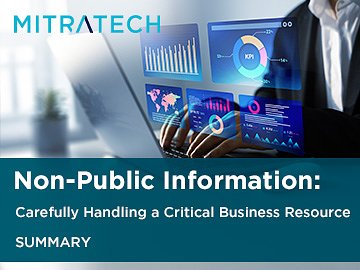Non-Public Information: Carefully Handling a Critical Business Resource (Summary)
English
30-Day Money Back Guarantee
Full Lifetime Access
Self-Paced
Finish in
7 mins!
Finish in
7 mins!
Made for for
Employees
and
Supervisors
Employees
and
Supervisors
Certificate
of Completion
of Completion
Mobile -
Friendly
Access
Friendly
Access
What you'll learn
Classify data as either public or non-public
Distinguish between types of non-public data
Apply proper handling processes for non-public data
Skills covered in this course
Description
Non-public business information serves as a vital resource, and its proper use helps to safeguard this important asset. This information can involve, for example, certain intellectual property, personal information, and sensitive, confidential information. It may be entrusted with an organization by a customer, business partner ,or other third party. How employees identify, use, safeguard ,and properly share non-public information serves as a critical responsibility. This course introduces and summarizes the key elements for identifying, working with, and safeguarding non-public information.
Author
For over 20 years, over 6000 organizations have relied on Syntrio’s knowledge, experience, and support to deliver and manage their business and compliance training with complete eLearning solutions and in-depth expertise in online learning design, standards, and technology.
Syntrio’s courses offer the newest training content and design and can help you build a better workplace and strong organizational culture, by addressing important HR and workplace compliance concerns.
Non-Public Information: Carefully Handling a Critical Business Resource (Summary)

Non-Public Information: Carefully Handling a Critical Business Resource (Summary)
Non-public business information serves as a vital resource, and its proper use helps to safeguard this important asset. This information can involve, for example, certain intellectual property, personal information, and sensitive, confidential information. It may be entrusted with an organization by a customer, business partner ,or other third party. How employees identify, use, safeguard ,and properly share non-public information serves as a critical responsibility. This course introduces and summarizes the key elements for identifying, working with, and safeguarding non-public information.



